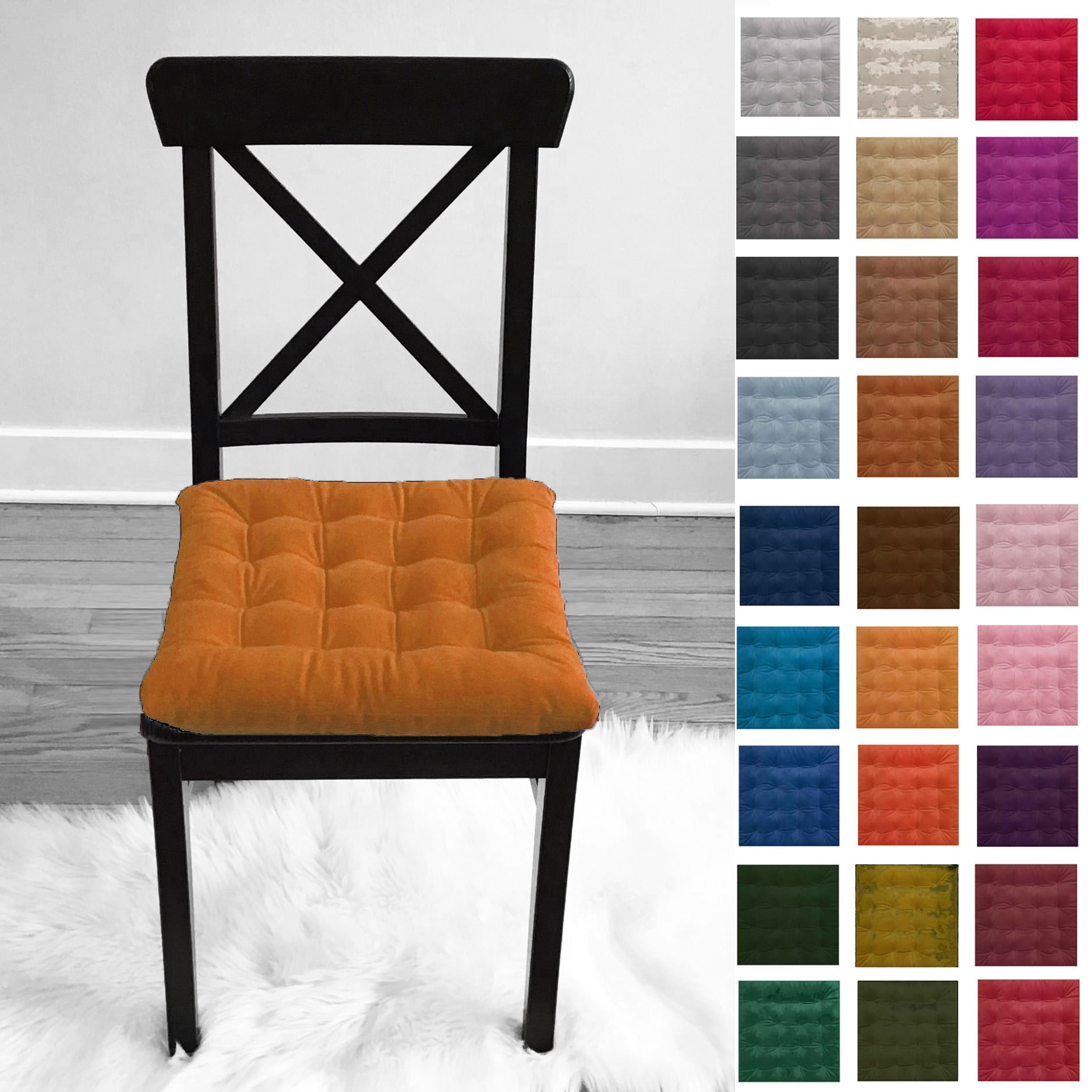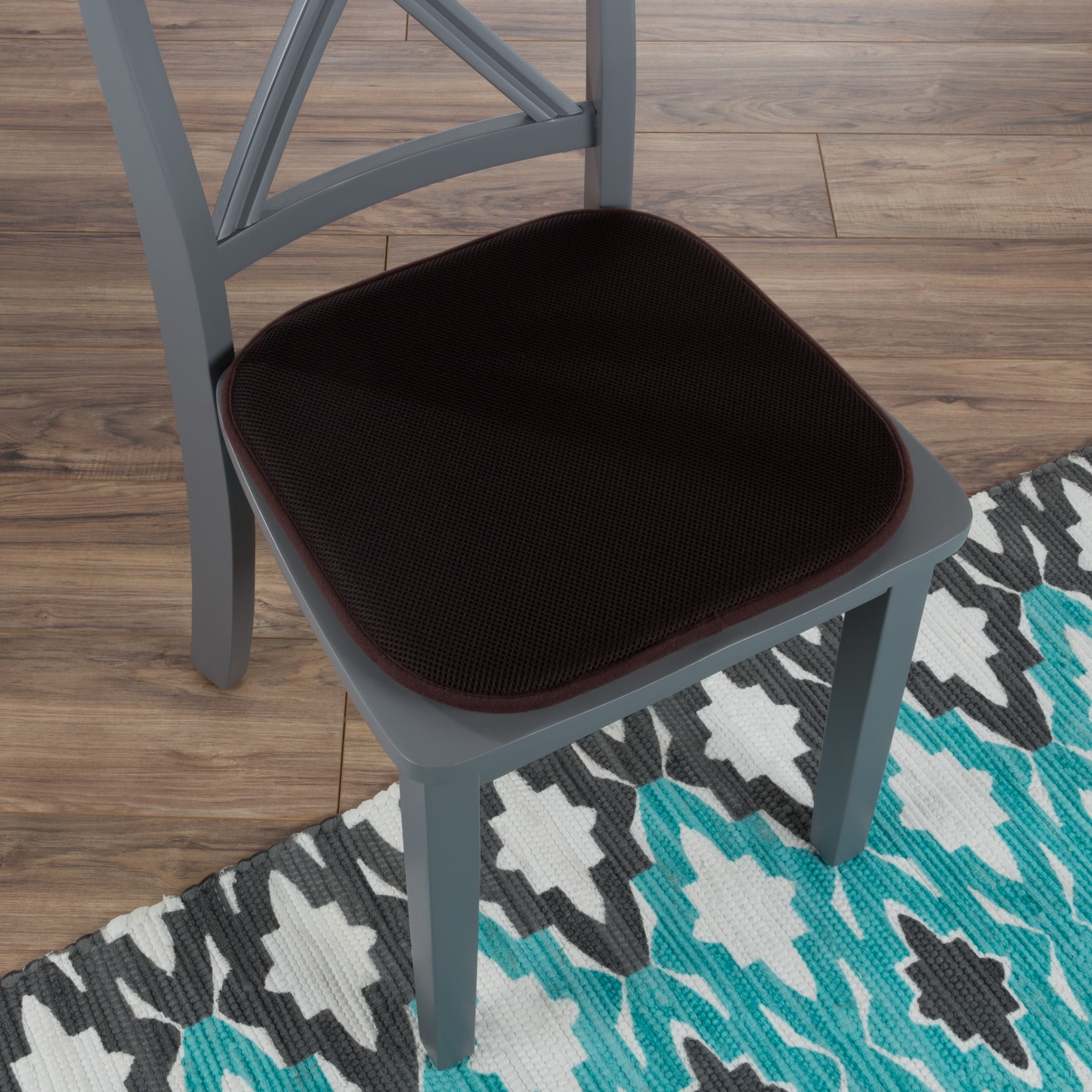Types and Styles of Dining Room Chair Pad Covers

Transforming ordinary dining chairs into havens of comfort and style, chair pad covers offer a versatile and affordable way to refresh your dining space. Their adaptability allows for seamless integration into diverse décor schemes, reflecting personal taste and enhancing the overall ambiance. From luxurious textures to vibrant patterns, the options are as boundless as your imagination.
Materials and Their Characteristics
The choice of material significantly impacts both the aesthetic and functional aspects of a chair pad cover. Each fabric brings its unique properties to the table, influencing durability, comfort, and the overall visual appeal.
| Material | Durability | Comfort Level | Aesthetic |
|---|---|---|---|
| Cotton | Moderate; prone to wrinkles but easy to wash and maintain. | Soft and breathable, suitable for warmer climates. | Versatile; accepts dyes well, allowing for a wide range of colors and patterns. |
| Linen | High; naturally strong and resistant to wear, develops a beautiful patina over time. | Slightly less soft than cotton, but breathable and naturally cool. | Elegant and sophisticated; often features a slightly textured appearance. |
| Velvet | Moderate; susceptible to pilling but offers a luxurious feel. | Exceptionally soft and plush, providing luxurious comfort. | Rich and opulent; adds a touch of glamour and sophistication. |
| Faux Fur | Moderate; requires careful cleaning; durability varies depending on the quality. | Very soft and cozy, ideal for colder climates. | Adds a touch of playful whimsy or luxurious warmth, depending on the color and texture. |
Styles and Design Elements, Dining room chair pad covers
The style of a chair pad cover can dramatically alter the look and feel of your dining room. Consider the existing décor and choose a style that complements or contrasts effectively.
Dining room chair pad covers – The design possibilities are vast, offering a spectrum of choices to match any personal style or existing décor.
- Solid Color: Provides a clean, minimalist look; ideal for creating a cohesive and sophisticated dining space. A deep navy blue, for example, can lend a sense of formality, while a cheerful yellow can inject vibrancy.
- Patterned: Offers endless creative possibilities. Floral prints can create a romantic ambiance, geometric patterns can add a modern touch, and paisley designs can inject a touch of bohemian flair.
- Tufted: Adds texture and visual interest; creates a sense of luxury and elegance. The tufting can be subtle or prominent, depending on the design.
- Ruffled: Adds a touch of femininity and romance; particularly suitable for traditional or shabby-chic dining rooms. The ruffles can be delicate or dramatic, depending on the design.
Shapes, Sizes, and Chair Compatibility
Chair pad covers are available in a variety of shapes and sizes to accommodate different chair styles and dimensions. Accurate measurements are crucial for a perfect fit.
| Chair Seat Dimensions (approx.) | Recommended Pad Cover Size (approx.) |
|---|---|
| 16″ x 16″ | 18″ x 18″ |
| 18″ x 18″ | 20″ x 20″ |
| 20″ x 20″ | 22″ x 22″ |
| Round, 16″ diameter | Round, 18″ diameter |
Buying Guide and Considerations for Dining Room Chair Pad Covers

Selecting the perfect dining room chair pad covers is an art, a delicate dance between practicality and aesthetics. It’s about finding the perfect complement to your existing décor while ensuring comfort and durability. This guide will illuminate the path to choosing chair pad covers that elevate your dining experience.
Determining Appropriate Size and Material
Measuring your chairs is the crucial first step. Accurately measuring the seat width, depth, and thickness will ensure a proper fit. Too small, and the covers will look skimpy; too large, and they’ll bunch and look untidy. Consider the style of your chairs – are they sleek and modern, or ornate and traditional? This will influence your material choice. For example, a plush velvet cover might be ideal for a classic wooden chair, while a linen blend might suit a minimalist design. Remember to account for any desired overhang. A slight overhang can add a touch of elegance, but excessive overhang will be cumbersome.
Choosing Color and Pattern to Complement Existing Décor
The color and pattern of your chair pad covers should harmonize with your dining room’s overall aesthetic. Consider the existing color palette of your walls, flooring, and existing furniture. Here are some design suggestions to inspire your selection:
- Monochromatic Harmony: Choose shades within the same color family. For example, if your dining room features warm earth tones, consider chair pad covers in varying shades of brown, beige, or terracotta. This creates a sophisticated and unified look.
- Complementary Contrast: Use colors opposite each other on the color wheel. For instance, a dining room with blue walls could be beautifully complemented by orange or coral chair pad covers, creating a vibrant and energetic atmosphere.
- Analogous Coordination: Select colors that are adjacent to each other on the color wheel. A green dining room could be enhanced with teal or olive green chair pad covers, fostering a calming and serene ambiance.
- Pattern Play: Incorporate patterns carefully. A bold geometric pattern can add a modern touch, while a subtle floral print can create a romantic atmosphere. Ensure the pattern complements the overall style of your dining room, rather than clashing with it.
Care and Maintenance of Different Materials
Proper care ensures the longevity and beauty of your chair pad covers. The cleaning and maintenance methods vary depending on the material.
| Material | Cleaning Method | Drying Method | Special Considerations |
|---|---|---|---|
| Cotton | Machine wash cold, gentle cycle | Tumble dry low or air dry | Pre-treat stains before washing; may shrink slightly |
| Linen | Hand wash or machine wash cold, delicate cycle | Air dry flat to prevent wrinkles | Iron while slightly damp; prone to wrinkles |
| Velvet | Spot clean or professional cleaning recommended | Air dry flat | Avoid harsh chemicals; delicate fabric |
| Polyester | Machine wash cold, gentle cycle | Tumble dry low or air dry | Durable and easy to care for; may pill over time |
Creative Uses and DIY Projects for Dining Room Chair Pad Covers

Chair pad covers, often overlooked as mere functional additions, offer a surprisingly versatile canvas for creativity and personal expression. Their transformation from simple protectors to design statements can dramatically alter the ambiance of your dining room, reflecting your unique style and adding layers of visual interest. Beyond their primary function, these covers present a delightful opportunity for DIY projects, allowing you to personalize your space with minimal effort and cost.
Three Unique Dining Room Settings Featuring Chair Pad Covers
The following examples illustrate how different chair pad cover styles can completely change the atmosphere of a dining room. Each setting offers a unique aesthetic, demonstrating the transformative power of these seemingly simple accessories.
Setting 1: Rustic Charm
Imagine a dining room bathed in the warm glow of a farmhouse-style chandelier. The walls are painted a soft, creamy white, adorned with vintage botanical prints. The wooden dining table, showing signs of age and wear, is paired with sturdy oak chairs. Thick, linen chair pad covers in a muted palette of sage green, ivory, and terracotta add a touch of rustic elegance. A simple, woven rug anchors the space, and a vase of wildflowers completes the scene. The overall aesthetic is one of relaxed sophistication, inviting warmth, and understated charm.
Setting 2: Modern Minimalism
This setting contrasts sharply with the first. Here, clean lines and a monochromatic color scheme reign supreme. A sleek, glass-topped dining table sits atop a polished concrete floor. Simple, modern chairs are upholstered in a neutral fabric. The chair pad covers are minimalist in design, perhaps featuring a subtle geometric pattern in shades of charcoal gray and white. A single, statement pendant light hangs above the table, casting a focused, modern light. The overall aesthetic is clean, sophisticated, and uncluttered, reflecting a contemporary and refined taste.
Setting 3: Bohemian Rhapsody
This dining room exudes vibrant energy and eclectic charm. The walls are painted a deep teal, providing a rich backdrop for a mismatched collection of chairs. A large, intricately patterned rug in warm oranges and reds anchors the space. The chair pad covers are a mix of bold prints and textures – perhaps one features a vibrant floral pattern, another a geometric design in rich jewel tones, and a third a playful ikat print. Macrame wall hangings, colorful throw pillows, and a collection of ethnic-inspired accessories complete the scene, creating a vibrant and bohemian atmosphere.
Creating a Custom-Designed Chair Pad Cover
Transforming ordinary chair pads into personalized works of art is surprisingly straightforward. This project requires minimal skills and readily available materials.
This step-by-step guide will walk you through the process of creating a custom chair pad cover using fabric remnants and basic sewing supplies. The beauty of this project lies in its adaptability; you can easily adjust the fabric, pattern, and embellishments to suit your unique style and existing décor.
- Measure and Cut: Carefully measure your chair pad, adding extra fabric for seams and hems (approximately 1-2 inches on each side). Cut your chosen fabric to these dimensions.
- Prepare the Fabric: If your fabric is prone to fraying, finish the edges using a serger or zigzag stitch on a sewing machine to prevent unraveling. This step adds to the longevity of your finished product.
- Assemble the Cover: Fold the fabric in half, right sides facing, and pin the edges together. Sew along the three sides, leaving one side open for turning. Turn the cover right side out, ensuring the corners are neatly turned.
- Finishing Touches: Press the seams flat for a clean finish. Hem the open edge using a simple hem or a decorative stitch. Consider adding embellishments like buttons, embroidery, or lace for a personalized touch.
- Fit and Adjust: Slip the cover onto the chair pad. Make any necessary adjustments to ensure a snug and comfortable fit.
